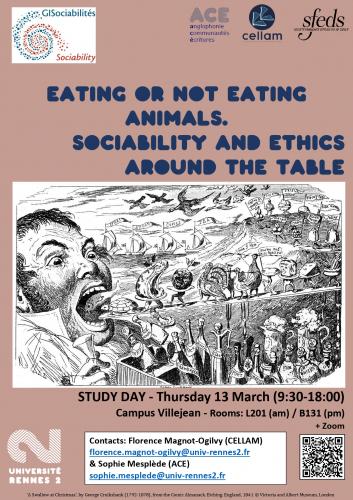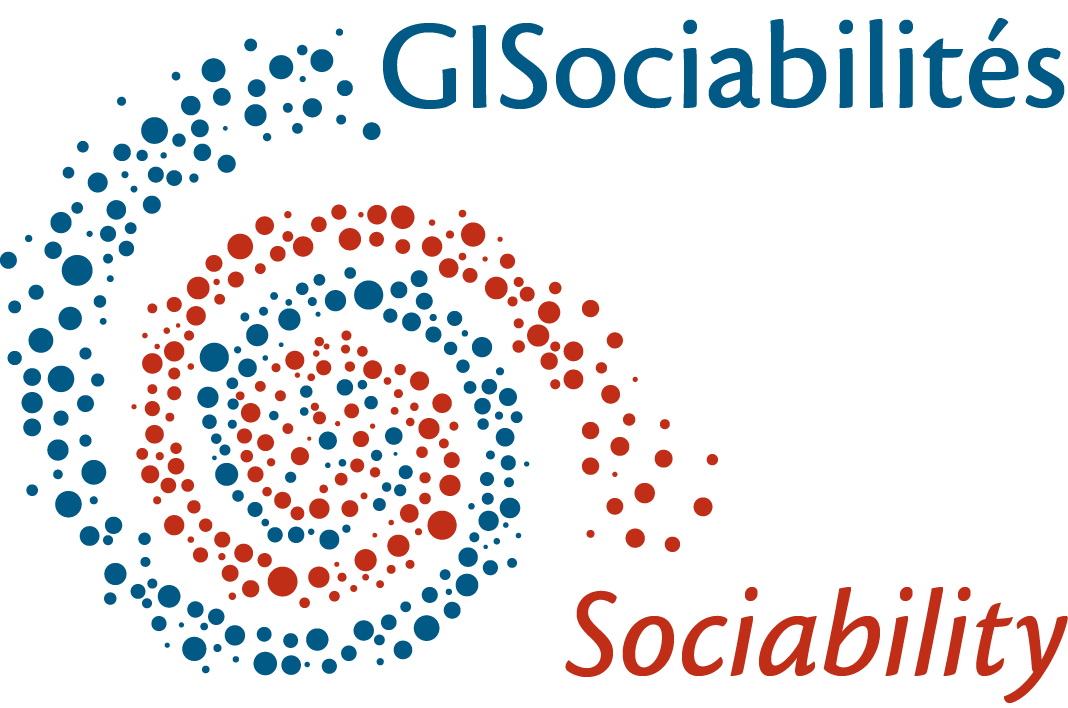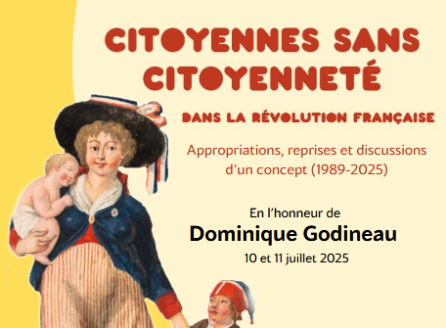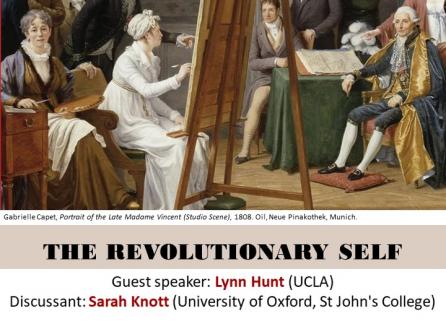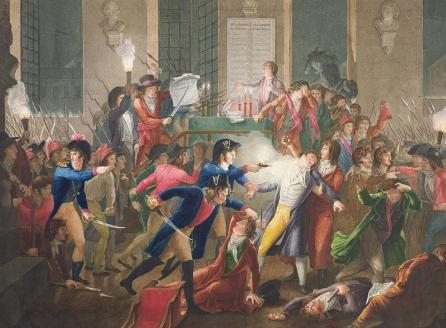Study Day : “Eating or not Eating Animals. Sociability and Ethics around the Table”
PROGRAMME
STUDY DAY
Thursday 13 March 2025
“Eating or not Eating Animals. Sociability and Ethics around the Table”
***
"Manger ou ne pas manger la chair. Sociabilité et éthique autour de la table"
Organisation: Florence Magnot-Ogilvy (Laboratoire CELLAM, Rennes 2) and Sophie Mesplède (Laboratoire ACE, Rennes 2)
Location: Université Rennes 2, Campus Villejean: Rooms L201 (am) / B131 (pm)
Lien Zoom: https://us02web.zoom.us/j/83681208378?pwd=Tkfy7Ix6OBPGF6qs171vauO08WLaek.1
This event is supported by the research groups ACE and CELLAM, the French Society for Eighteenth-Century Studies (SFEDS) and the GIS Sociabilités/Sociability
***
PROGRAMME
Jeudi 13 mars/ Thursday 13 March
Salle/ Room L201
9h30 Ouverture/Opening
9h45-10h45. Jean-Luc Guichet (Université de Picardie Jules Verne) « Cracher dans la soupe : critiques de la convivialité carnivore chez quelques auteurs du XVIIIe siècle »
10h45-11h15 Café/ Coffee Break
11h15-11h45. Agata Knopik. (Université Adam Mickiewicz de Poznan) “The abstinence from meat in the novels of Polish priest Michał Dymitr Krajewski (1746-1817)”
11h45-12h15 Nicolas Fréry (Université Gustave Eiffel). « Le loup végétarien. Destin d’une fable au XVIIIe siècle. »
12h15-12h45 Guilhem Armand (Université de La Réunion). « La naissance de la gastronomie et le végétarisme en débat au tournant des Lumières. »
12h45-14h30 Déjeuner/ Lunch
Salle/ Room B131
14h30-15h00 (Online) Erica Joy Mannucci (Université de Milan-Bicocca). « Ne pas manger de la chair dans la société aristocratique de Milan »
15h00-15h30 David McCallam (Université de Sheffield) “Of Meat and Morlacchi: Primitivist Sociability in the Eastern Adriatic in Giustiniana Wynne’s Les Morlaques (1788)”
15h30-16h00 (Online) Lydia Vazquez Jimenez et Juan Manuel Ibeas-Altamira (Université du Pays Basque, Espagne). « L’éthique sadienne à l’épreuve de la table »
16h00-16h30 Café/ Coffee Break
16h30-17h30 Jane Spencer (Université d’Exeter) “‘A most treasonable antipathy to roast beef’: John Bull, John Oswald and radical vegetarianism in the 1790s”
17h30 Conclusion
Contacts: Florence Magnot-Ogilvy (CELLAM) : florence.magnot-ogilvy@univ-rennes2.fr et Sophie Mesplède (ACE) : sophie.mesplede@univ-rennes2.fr
